Madder has several relatives that are also rich in useful reds. These plants are native here in Denmark, and have been used as red dyes a very long time back.
Believe it or not, the year is drawing to a close. So, I want to try to summarize all the many dyeing experiments I did over the year.
This summer, I searched for madder’s relatives, to find as many as possible. Madder, Rubia tinctoria, belongs to the madder family (Rubiaceae) in which you also find the bedstraws (the genus Galium).
Galium species do not contain as large amounts of red dye as cultivated madder does, but several of the species grow wild here in Denmark, and their historical use is well known.
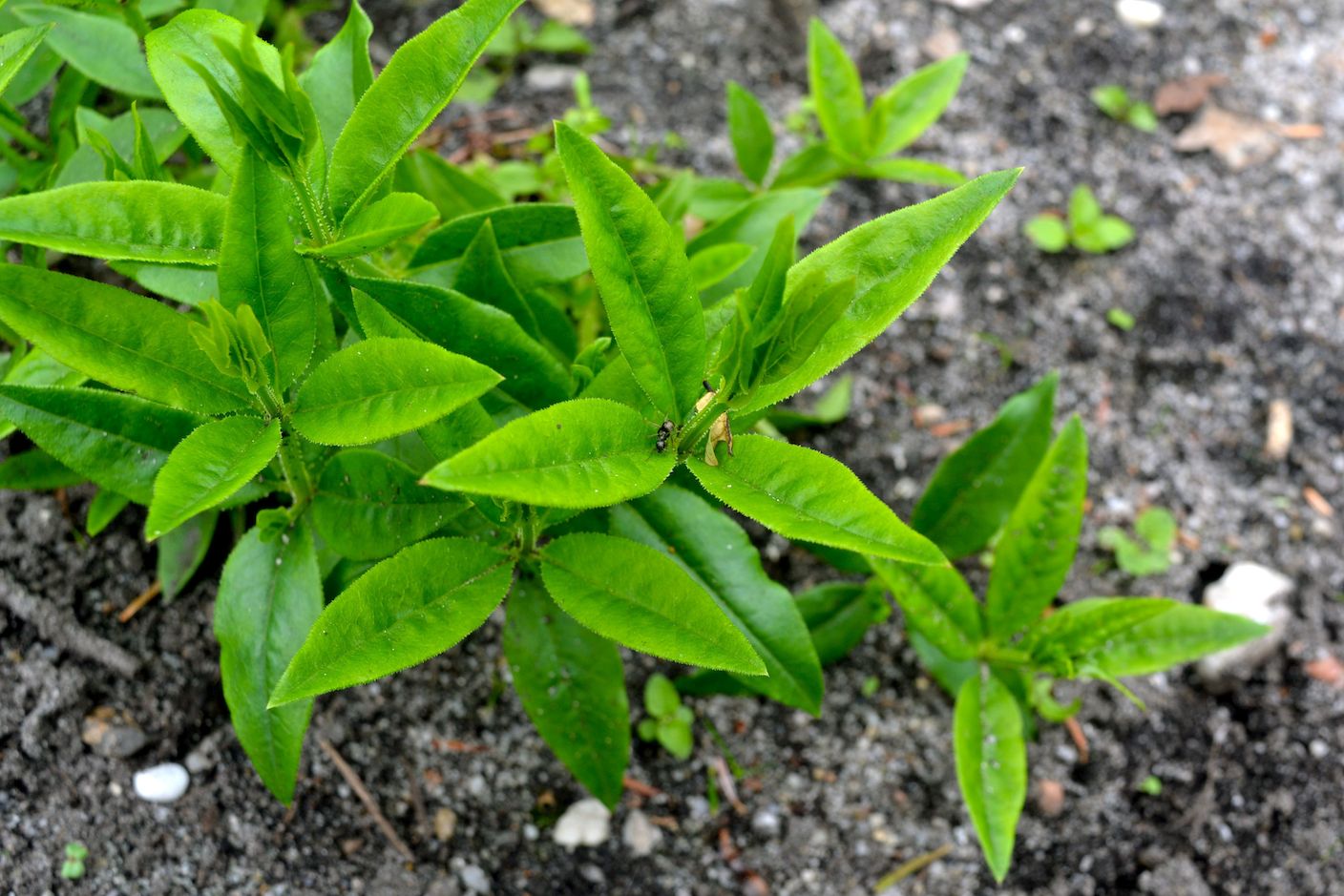
The first Galium species to present itself was cleavers (Galium aparine). It’s everywhere! Anybody who has ever walked outside surely know this plant. Or at least its seeds. They are extremely good at clinging to clothing and dog fur. The whole plant is covered with clingy hooks – the very same that cultivated madder has.
My attempt to dig up cleaver roots quickly came to an end. The roots have the thickness of sewing thread, so a lot of digging is required. But the roots are said to contain dye, so I’m keeping them on my list of maybes.
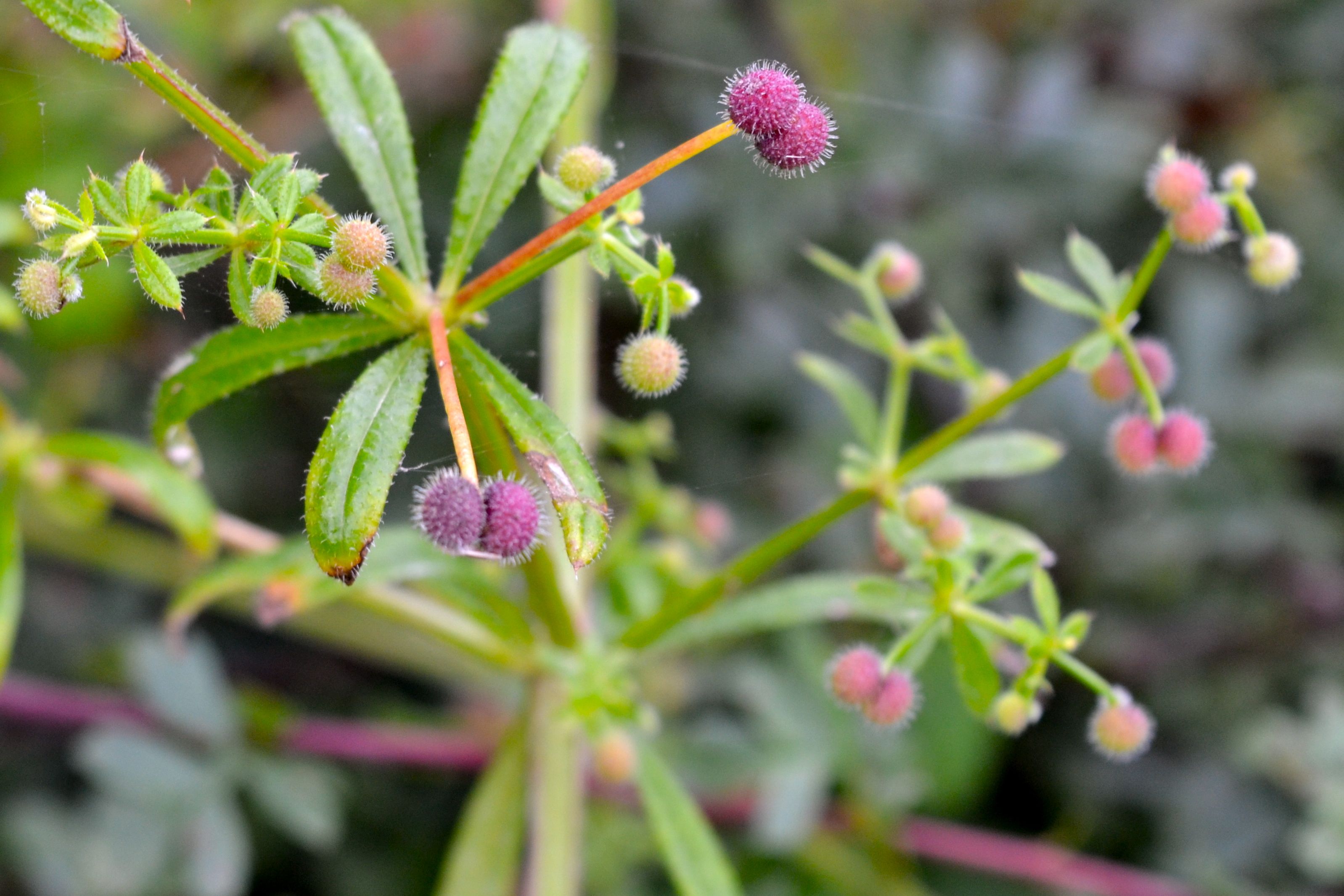
Lady’s bedstraw (Galium verum) is the plant mentioned by most natural dyeing books. I tried growing it in the garden this year, seeding it outside in the spring, but nothing grew.
Whenever you’re looking for a specific plant or mushroom, but haven’t found it yet, it’s simply invisible. But, once you find it, you start seeing it everywhere. The relationship between Lady’s bedstraw and myself developed exactly like that over the summer. Once I found it, it was everywhere! For example this coastal grassland:
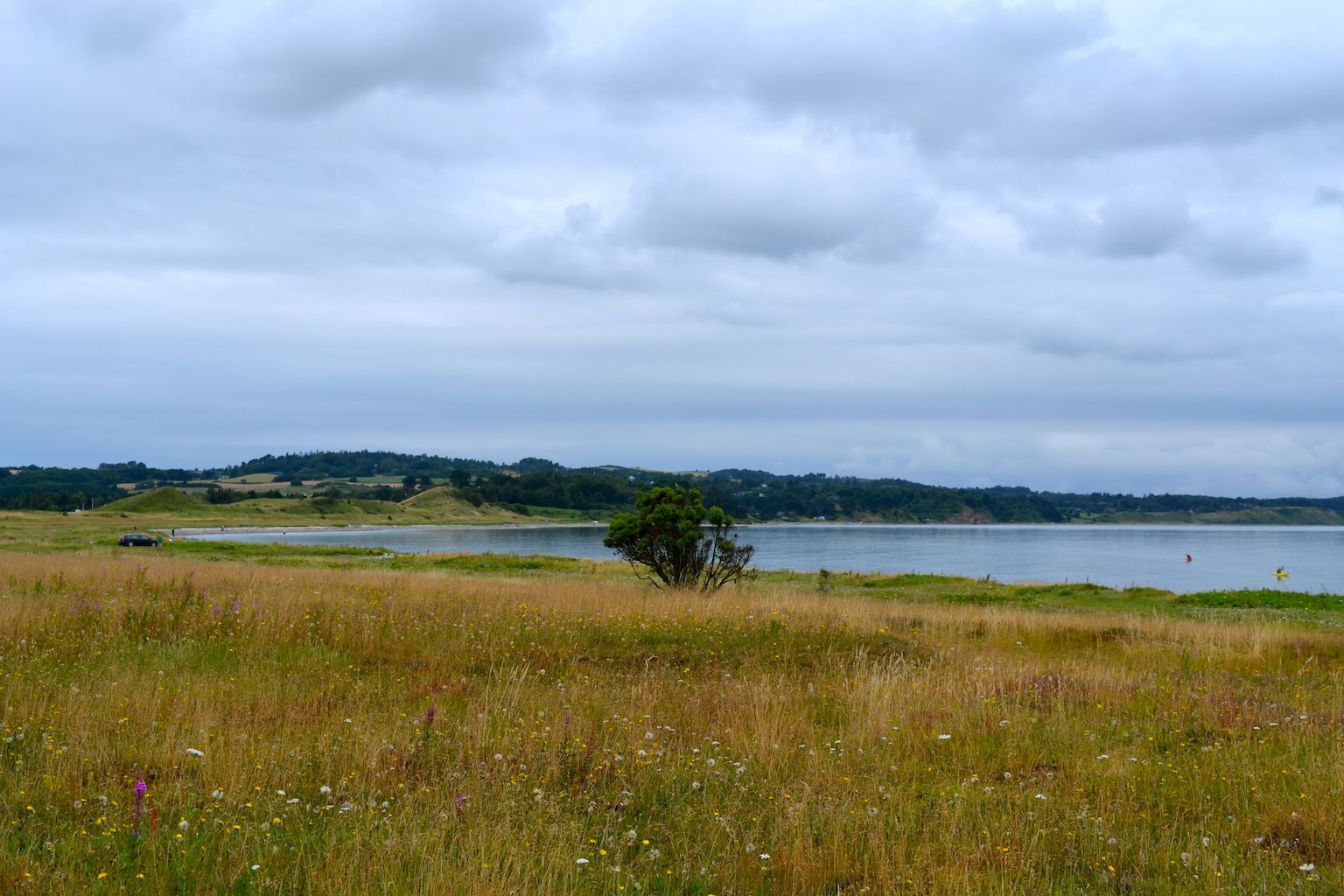
Lady’s bedstraw truly thrives in the nutrient-poor, sandy soil, along with yarrow and St. John’s wort.
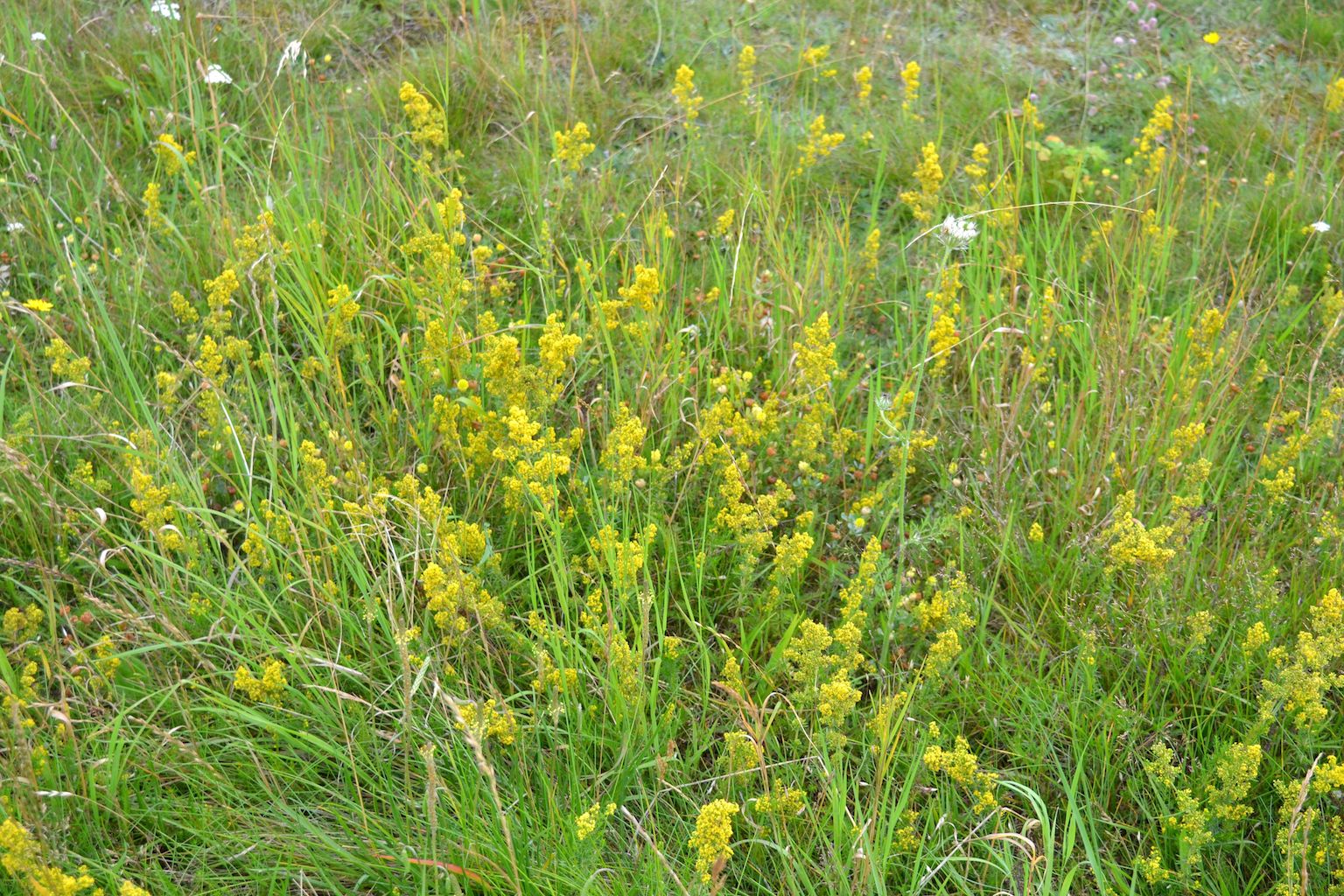
Unfortunately, several walks with a shovel only yielded a very small handful of Lady’s bedstraw roots – so little that my scale didn’t register. Like with cleavers, the roots are extremely fine, and they tangle up with roots of grass etc. In combination with stony, sandy soil, the digging job gets hard. To get your hands on a larger pile of these roots, I suspect you have to grow them in a well-prepared sandy soil without obstacles. Anyway, I tried dyeing with my small handful of roots, but it gave almost no color.
But then, on a forest walk, this plant turned up – hedge bedstraw (Galium mollugo):
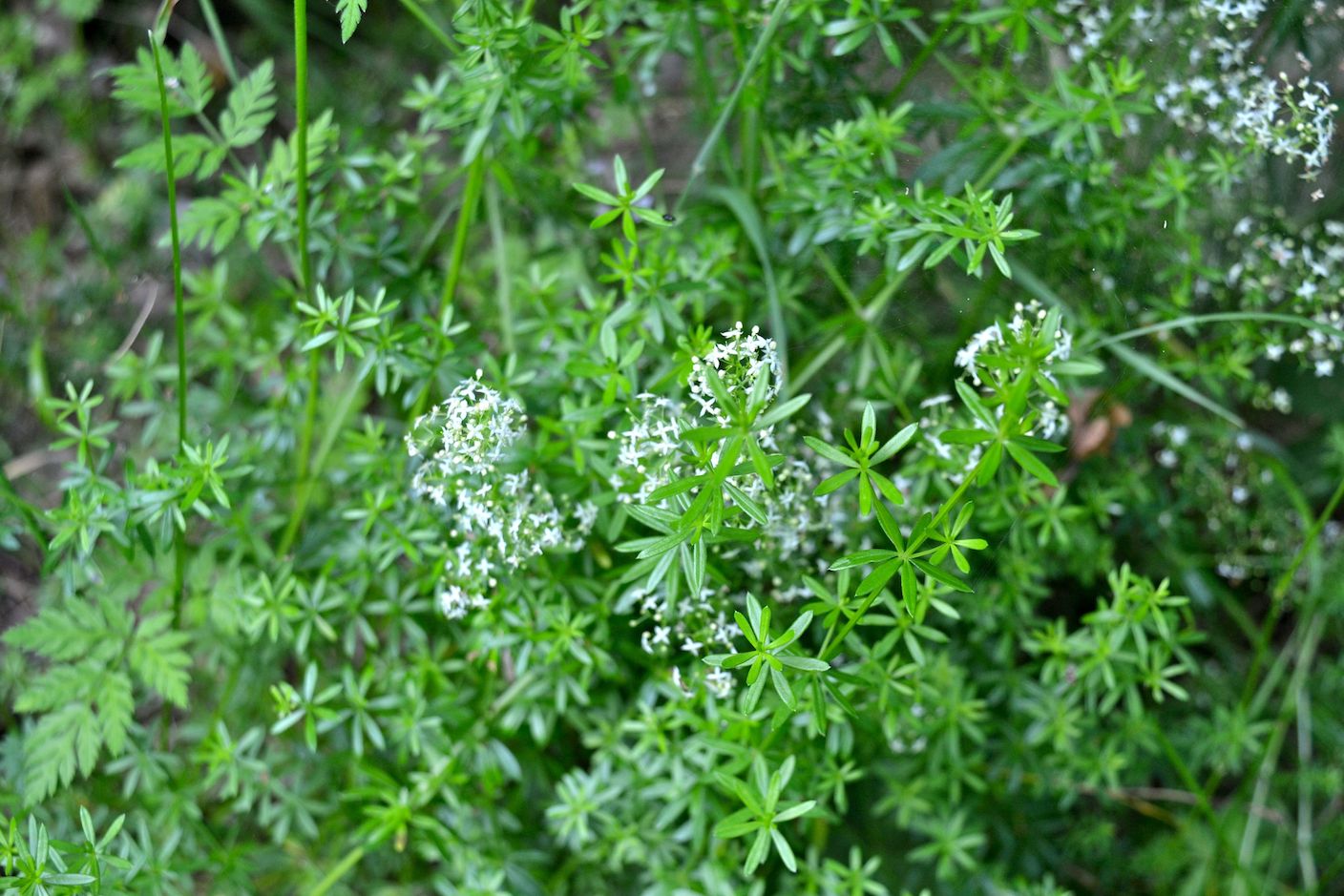
Hedge bedstraw is also mentioned by different books as a dye plant, so I brought out the shovel once more. Again, it was difficult. The forest soil is obviously full of tree roots that make digging quite impossible. But I managed to get a couple of handfuls of roots, mainly because hedge bedstraw roots are not that thin. I dug up the roots on July 9th. The next day, after cleaning, the slightly dried roots weighed 30 g.
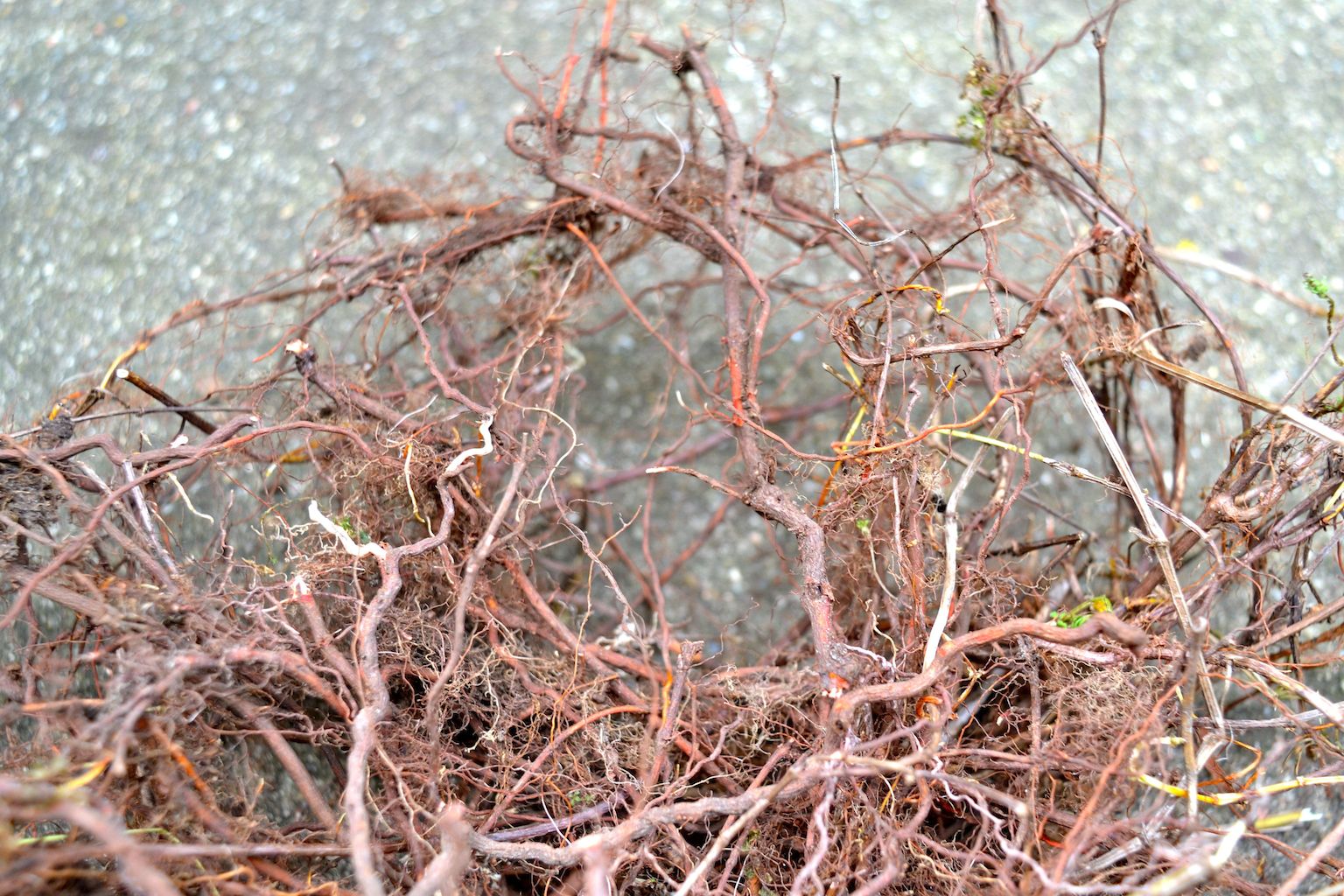
I soaked the roots in cold water overnight, then dyed my usual alum mordanted 12-gram skeins of Fernris to test the dye. I removed the overnight water because Jenny Dean does, but I should have concluded from my madder experiments that it is not necessary to do so. The water used to soak the roots overnight simply contains a small amount of dye, with the same properties as the dye you extract when you heat the roots in water (the small 6-gram skein laying across the others in the picture below was dyed with the discarded water).
Then, I dyed alum mordanted 12-gram skeins in a 1st and 2nd dyebath, in exactly the same way as if it had been madder: heating up to 60 degrees C, then leaving the yarn in the dyebath until the next day. The first bath gave a convincing red-orange, which would not have been a surprise had it been madder I was dyeing with. The dye is less abundant in hedge bedstraw than in madder, but the difference is actually smaller than anticipated. Here, I used 30 g of roots on 12 g of yarn, with madder, you would get this shade with less than 100% weight of fiber.
After the second bath, which also worked well, I was evidently feeling on top of things, and threw in a 50 g skein. There was not much dye left, but to extract everything that was there, I left the bath with yarn in a jar outside. That was in mid-July.
A couple of times, I heated the entire jar over a water bath to give the process a helping hand, but the rest of the time, it was just standing there. I turned over the yarn to get an even dye, and for a while, it also fermented. Both time and fermentation should help release the dye. Also, I imagine that a skein of yarn in the bath will soak up the dye as it is released, permitting more to come out (alizarin has a rather low solubility in water). In any case, my large skein stayed in the jar for 6 weeks, and turned out a pleasing coral color. And, the dye bath ran clear, so there was probably nothing left in the roots.
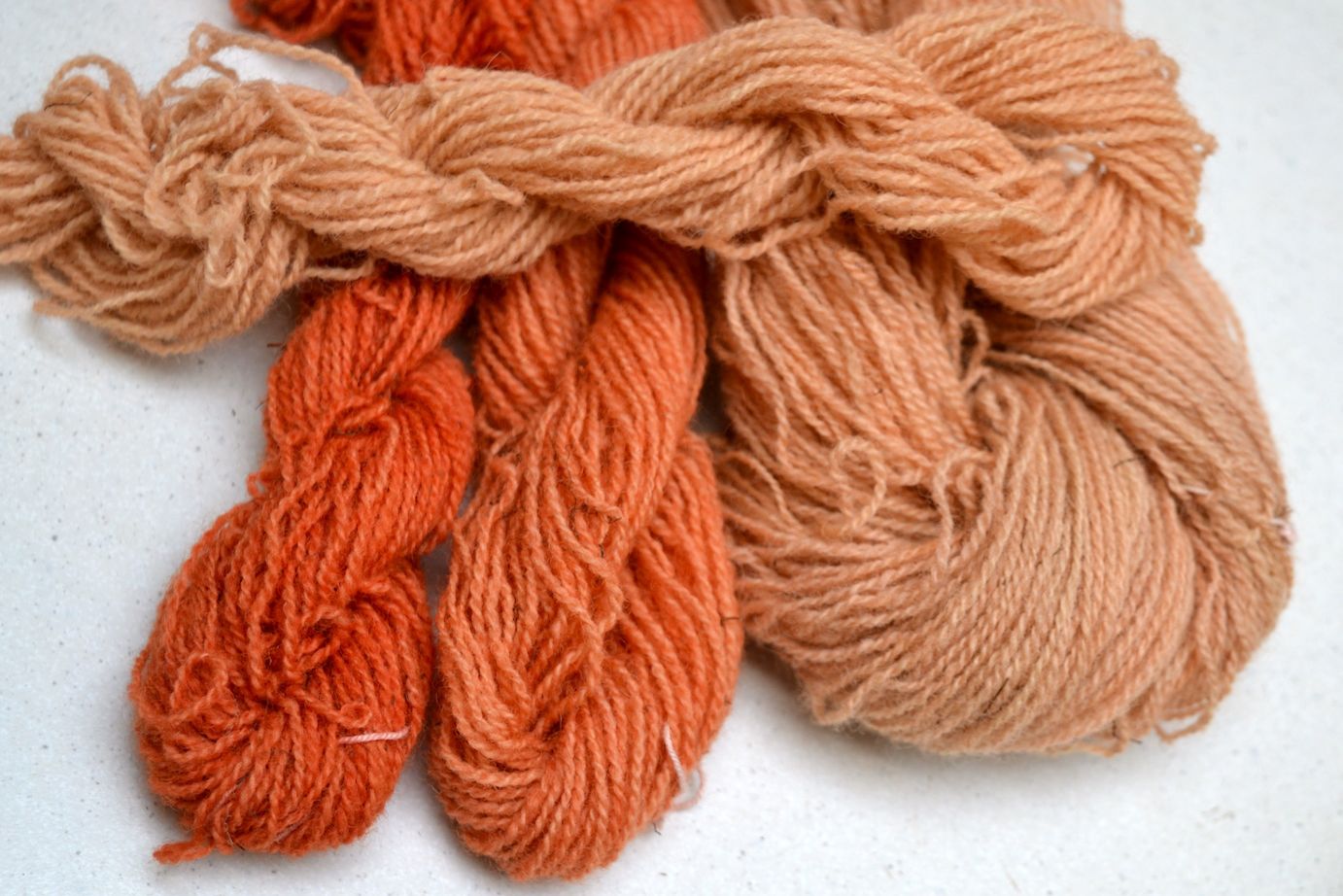
[…] Read this post in English […]
Thank you for this post. I’ve just started dyeing with natural dyes, hedge bedstraw in particular, and am still figuring out how to process the roots. Do you grind into a powder before dyeing or rough chopped or…? It seems likely that maximum pigment might be accessible with powder. What is your experience with this aspect?
Hi Lori, sorry I didn’t see your comment before! I haven’t tried grinding the roots, I just chop them. Having a powder in a dyebath is quite a pain when you need to get it out of your fiber after dyeing. In theory, the finer you grind the dyestuff, the more color you should get out.. but with coarser pieces, you gain color by just steeping longer, plus the pieces are much easier to remove later!
Astrid
Hi Astrid,
I am up against a Bedstraw that I believe is Gallium mollugo. I am trying to smother a half acre of hayfield that is about 40% G.mollugo, to plant for pollinators. Looking at your roots pic, I fear we may not be able to snuff this plant out in the six months of having a geo-textile pinned down over the whole site. Those roots look quite tough. I know you may not be a meadow maker but would you wager I’d have success smothering this tough plant, or would fail due to this plants vigor? Thank you, Tom Sullivan